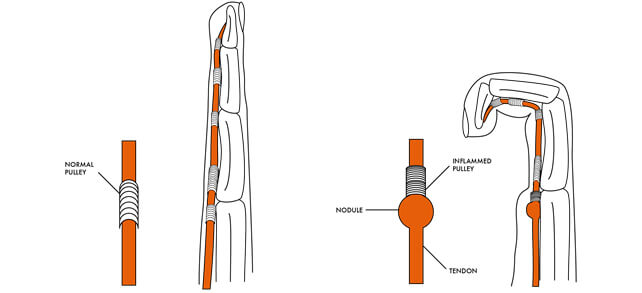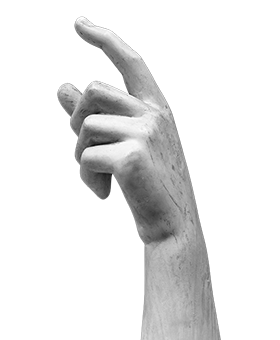Overview
If your finger gets stiff or stuck when bent and you get a painful snapping feeling when you straighten it, this may be ‘triggering’. Think of your fingers as having a complex pulley system. Each finger has long flexor tendons that come from your forearm, via the wrist. These glide freely through tunnels called tendon sheaths and each time the finger moves, the flexor tendon glides through this tunnel like a finely-tuned machine. The sheath contains lubricating fluid and the glide should be smooth and free of obstruction. Along the sheath are pulleys, which hold the tendon against the bone as they move.
Sometimes the flexor sheath and the pulleys can become irritated and inflamed, obstructing the tendon as it moves through this tunnel. When there is obstruction, there can be increased inflammation and scar formation. This makes the sheath even tighter with the result that the tendon can get trapped there and the finger is unable to straighten. In most cases this happens at a pulley located in the palm of the hand just at the base of the finger.
Trigger finger is more common in women between 40 and 60. The condition can begin after periods of extensive hand use and can sometimes happen to more than one finger.

Symptoms
Symptoms include swelling, a tender lump on the palm of your hand, pain and/or difficulty straightening your fingers. Many people report that they wake up in the morning with the finger stuck in a flexed position into the palm which requires them to actually pull the finger out straight again. Diagnosis is usually by clinical examination rather than a test. If you think you have a trigger finger, feel your palm at the front of the affected finger as you straighten it. You should feel a “click” or “pop”.
Treatment
Initial treatment is usually a steroid injection and some hand therapy. If this does not settle the problem within 6 weeks you may need an operation. Surgery can usually be performed under local anaesthetic as a day case in hospital. Dr Mackay will make a small incision on the palm of your hand at the base of the triggering finger and release the problematic pulley that is stopping the tendon from gliding.
What to Expect in Recovery
Recovery from trigger finger surgery is usually simple and easily managed without therapy. In some cases there is a tendency for the finger to bend over and this can be a reason to see a therapist for some guidance and a splint.
